June 18, 2024
By Rosalie Zuckermann, Technical Writer
Since Athens hosted the first modern Olympics in 1896, cities around the globe have vied for their turn to host the Games. Yet the fame, honor, and tourism associated with hosting the Olympics often overshadows the immense preparation and economic strain it takes. Host cities undertake years of planning and construction to accommodate the millions of people that flood infrastructure designed for far fewer.
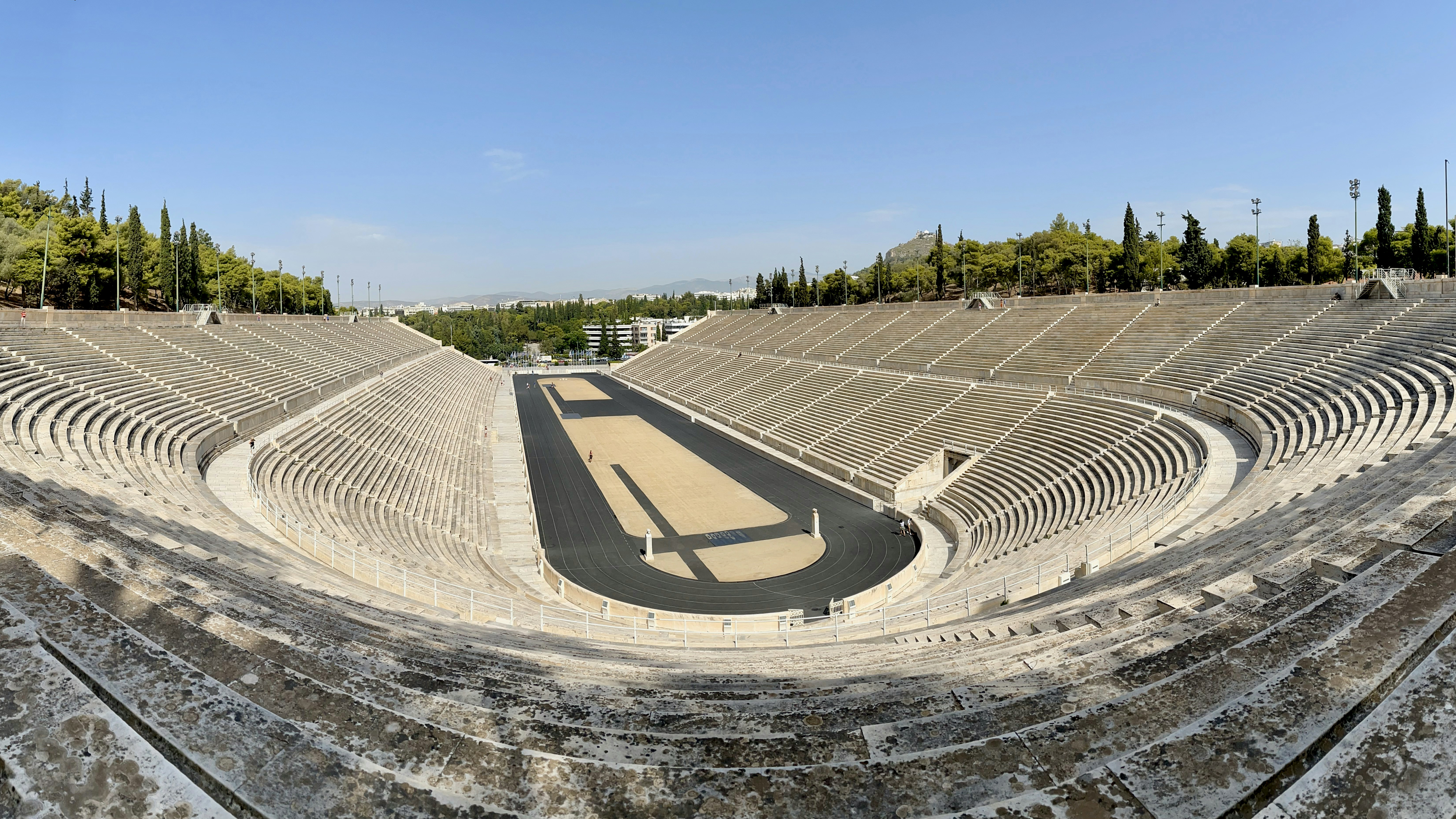 For the 1976 Games, Montreal’s total expenditure was 13 times its original estimate, incurring a $1.6 billion deficit that took three decades to pay off. In 2004, Athens constructed dozens of venues with a 97 percent cost overrun, only to now see swimming pools dry and arenas overgrown.
For the 1976 Games, Montreal’s total expenditure was 13 times its original estimate, incurring a $1.6 billion deficit that took three decades to pay off. In 2004, Athens constructed dozens of venues with a 97 percent cost overrun, only to now see swimming pools dry and arenas overgrown.
Considering Games like these, the International Olympic Committee (IOC) has implemented protocol to better set up host cities for economic longevity. In 2005, they established the Olympic Games Knowledge Management program, which allows each new organizing committee to observe the planning processes of other hosts. In 2014, they released the Olympic Agenda 2020, which contained 40 recommendations reforming sustainability, equity, transparency, and community involvement. Then, in 2018, they launched the New Norm, an initiative focusing on decreasing expenditure and risk of hosting while increasing efficiency and sustainability of the Games.
This sequence of protocols has ushered in a new era of the Olympics where host cities shift from focusing on a few weeks of soon-shuttered glory to long term strategies of urban revitalization. Paris and Los Angeles, the locations of the 2024 and 2028 Olympic and Paralympic Games, respectively, are embracing this with revolutionary ideas—but they also raise questions about the complications that come when plans leave the page and break ground.
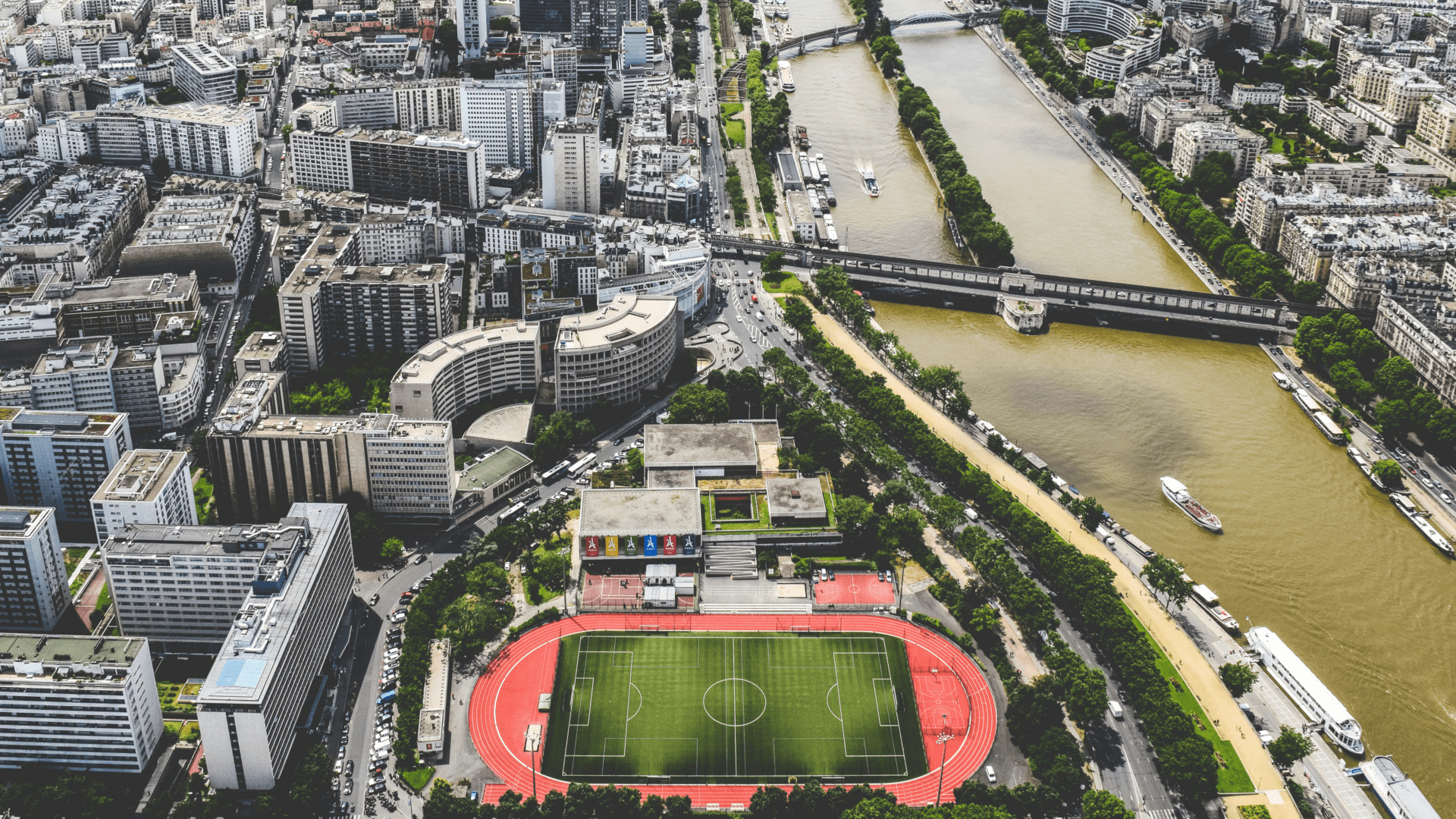
Paris and LA were awarded a historic simultaneous allocation as hosts for the next two summer Olympics.
Two host cities set ambitious infrastructure goals
In 2017, Paris and LA were awarded a historic simultaneous allocation as hosts for the next two summer Olympics. They made the most of the opportunity: Paris announced it would cut the average carbon footprint of all previous summer Olympics in half. LA pledged to host the first “energy positive Games,” meaning that it would generate more energy than what is needed to run the Games. Paris is using 95 percent existing or temporarily constructed facilities for competition, only building one new, permanent venue, while LA will use 100 percent existing or temporary infrastructure under the motto “work with what exists.”
Both cities also decided to undertake extensive transportation projects, taking advantage of the Games as an opportunity to work toward achieving broader environmental goals. Paris is making the first Games to be entirely accessible by low-carbon public transit. LA is following this precedent, funneling resources into public transit to create a “car-free Games”—ensured by a lack of parking which will further push spectators not to drive.
Paris is making the first Games to be entirely accessible by low-carbon public transit.
For each city, the future of transportation lies in the rails. Paris has been building a network of rail lines that encircle the region, linking suburbs to the urban core with 68 new stations. This system, called the Grand Paris Express, played a significant role in winning Paris the bid for the Olympics.
Similarly, LA is expanding the reach of its Metro Rail System through various projects, mainly the East San Fernando Valley Light Rail Transit Project and the D Line (Purple) Subway Extension Project. These two lines will connect neighborhoods in the San Fernando Valley and the Westside to central LA, where most Olympic venues are located.
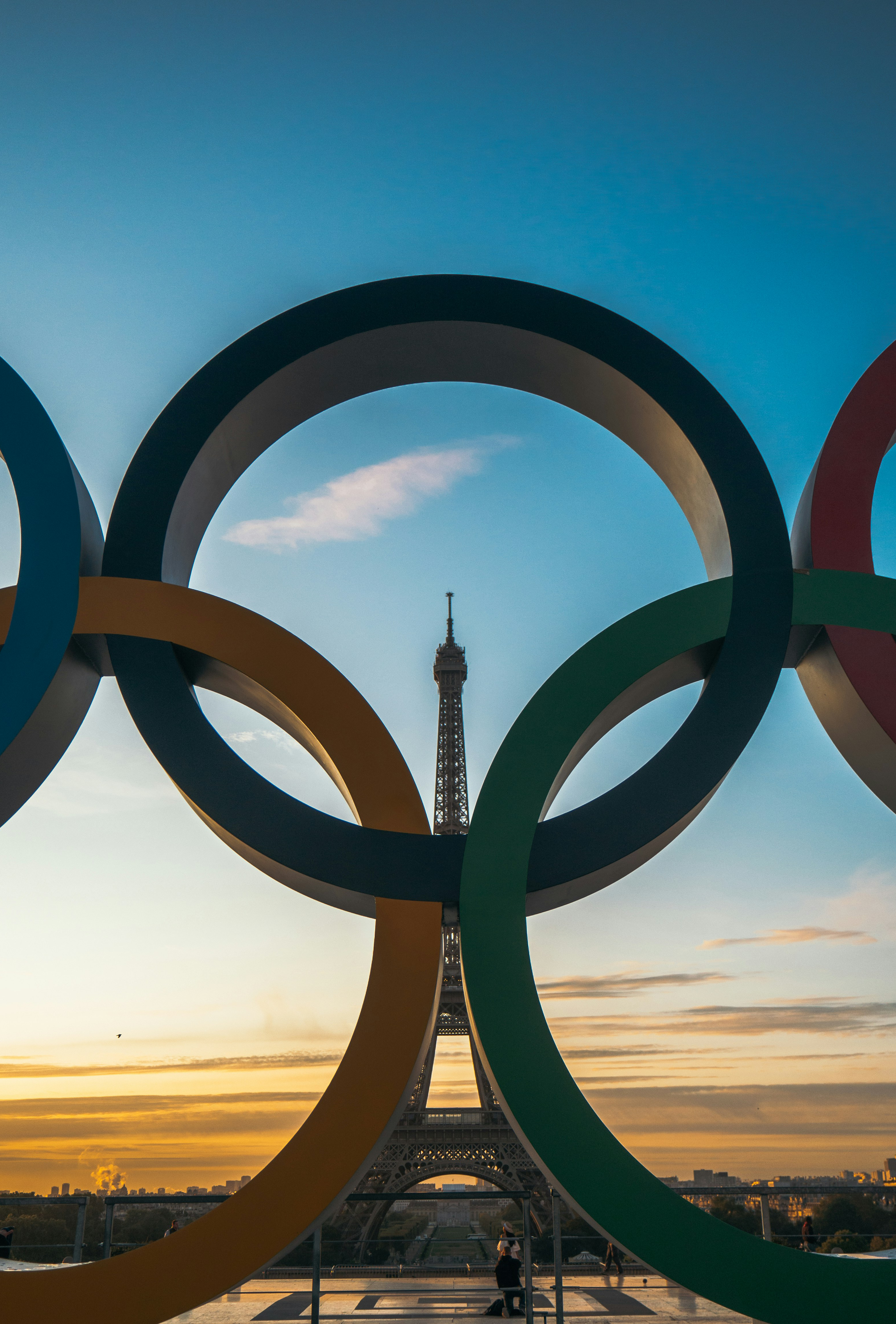 Large-scale construction projects like these often end up getting delayed as obstacles arise. But the Olympics act as a non-negotiable deadline, meaning that the usual timeline adjustment tactics have intensified consequences—and without time, organizers turn to money. This bind is why the cost overrun for the Olympics is so much larger than that of most other megaprojects, with an average overrun of 156 percent.
Large-scale construction projects like these often end up getting delayed as obstacles arise. But the Olympics act as a non-negotiable deadline, meaning that the usual timeline adjustment tactics have intensified consequences—and without time, organizers turn to money. This bind is why the cost overrun for the Olympics is so much larger than that of most other megaprojects, with an average overrun of 156 percent.
Paris and LA have both used this fixed deadline as motivation to push preexisting projects to the finish line. Now, the question lies in whether they can beat the odds and follow through on setting this new precedent for host cities.
A month out, Paris adjusts to an unfinished railway system
For the most part, Paris has followed through on their initial goals. They have built the planned temporary venues that highlight existing historical architecture and monuments and the geothermal, solar-powered Olympic Village that will be repurposed into residential housing after the Games.
But while the venues might be all set, how people will get to them has been up in the air. Even back in November of 2023, Mayor of Paris Anne Hidalgo announced that public transportation would not be ready in time. Some key rail extensions and links are completed, such as Line 14 to Paris-Orly Airport, but the five lines that comprise the Grand Paris Express will open gradually starting in 2025. Compounding the delays, tickets for existing transit will be double the cost of their standard fare for those who do not already have travel passes.
In response, the city is making some adjustments, such as increasing service by 15-70 percent on certain rail lines. They have also relocated some competition venues, such as the volleyball complex and the aquatic center, to be closer to existing public transit lines.
Yet, the public transportation network in its current state is predicted to be sufficient, albeit congested, to accommodate the influx of the anticipated 15 million visitors. Named the world’s top city for public transit in 2023 according to William Russell’s Global Transport Index, Paris has the existing infrastructure to operate a mega-event without significant operational changes.
The public transportation network in its current state is predicted to be sufficient, albeit congested, to accommodate the influx of the anticipated 15 million visitors.
Even though the city won’t reap the benefits this summer, the imperative of the Olympics still sped up development of the Grand Paris Express, the planning for which has been going on for years before the city won the Olympic bid in 2017. Once completed, it will streamline commutes, connect disadvantaged areas to job centers, and cut carbon emissions by three to five times more than construction and operation of the metro generated. The Games can go on without it, but the imperative of incorporating the Express into both the Olympic bid and plan nonetheless aided the region’s collective future.
LA’s big plans slow down, city keeps pushing for change
LA has been striding alongside Paris in its Olympic reforms, but the infamous California auto-centric city does not have the same flexibility to fall back on an existing high-quality and high-capacity transit system. LA is notoriously landscaped for cars over people, and it was only in 1980 that the city began planning the bones of the rail system we have today.
A year prior to completion of their first modern rail line, LA hosted the 1984 Olympics. Despite being the first city to host the Olympics without a rail network, the Games were a huge success. LA chartered fleets of buses and utilized existing infrastructure during the event, turning more than $200 million in profit. They strategically dodged economic catastrophe, but they also didn’t push forward transit progress, as all the buses were a temporary solution for Games-specific traffic.
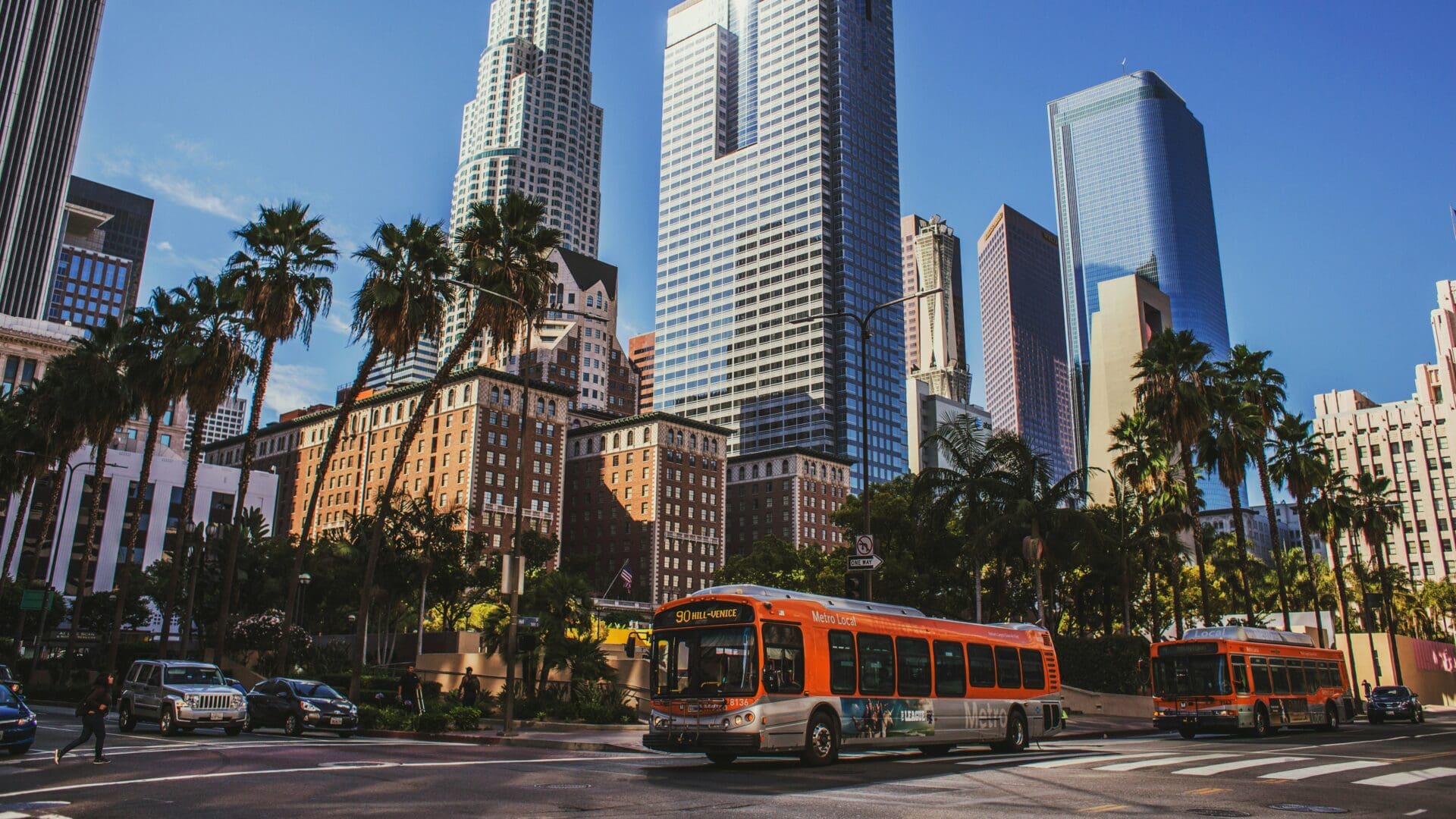
LA chartered fleets of buses and utilized existing infrastructure as hosts of the 1984 Olympics.
In the 40 years since LA’s last stint as a host, Metro’s rail system has not seen quite the boom hoped for. Although they have a substantial network, ridership had been steadily declining for years, despite a growing population—a trend that was only worsened by COVID-19. But recently, ridership has seen a turnaround, reaching 96 percent of pre-pandemic levels with an 18-month straight run of year-over-year increases. Metro’s Olympic plans can build off this promising momentum.
In 2017, former Mayor Eric Garcetti launched a plan to complete 28 highway, roadway, and public transit projects by 2028, a vision dubbed “28 by ’28.” These projects ranged from subway extensions to underground connectors to new bike and bus lanes, all of which are detailed in the Metro Vision Plan. Many were already on the books as part of Measures R and M, with some slated for completion as late as the 2040s, and were pushed up in this plan. According to a revised project list from March of this year, five of the projects have already opened, with nine more already under construction and all 28 scheduled for completion by 2028. However, 11 of the original projects from 2017 were replaced with more attainable projects.
In 2017, former Mayor Eric Garcetti launched a plan to complete 28 highway, roadway, and public transit projects by 2028, a vision dubbed "28 by ’28."
Many planners saw it as a mobility revolution, but not everyone was as optimistic. There has been pushback from residents due to business displacement during construction and a resulting lack of parking after completion. A 2019 critical review by the Reason Foundation predicted that “28 by ’28” would fall into Metro’s pattern of “over-promising and then failing to deliver.”
As the years tick closer to the Games, eyes are on LA to see what they will be able to accomplish by 2028. This is largely due to the plan’s dependence on funding that had yet to be obtained to finance a budget of $4 billion a year for a decade—more than Metro had ever spent on a project. Combined with an overburdened construction capacity and an overestimation of future sales tax revenues, the original timeline soon needed adjustments.
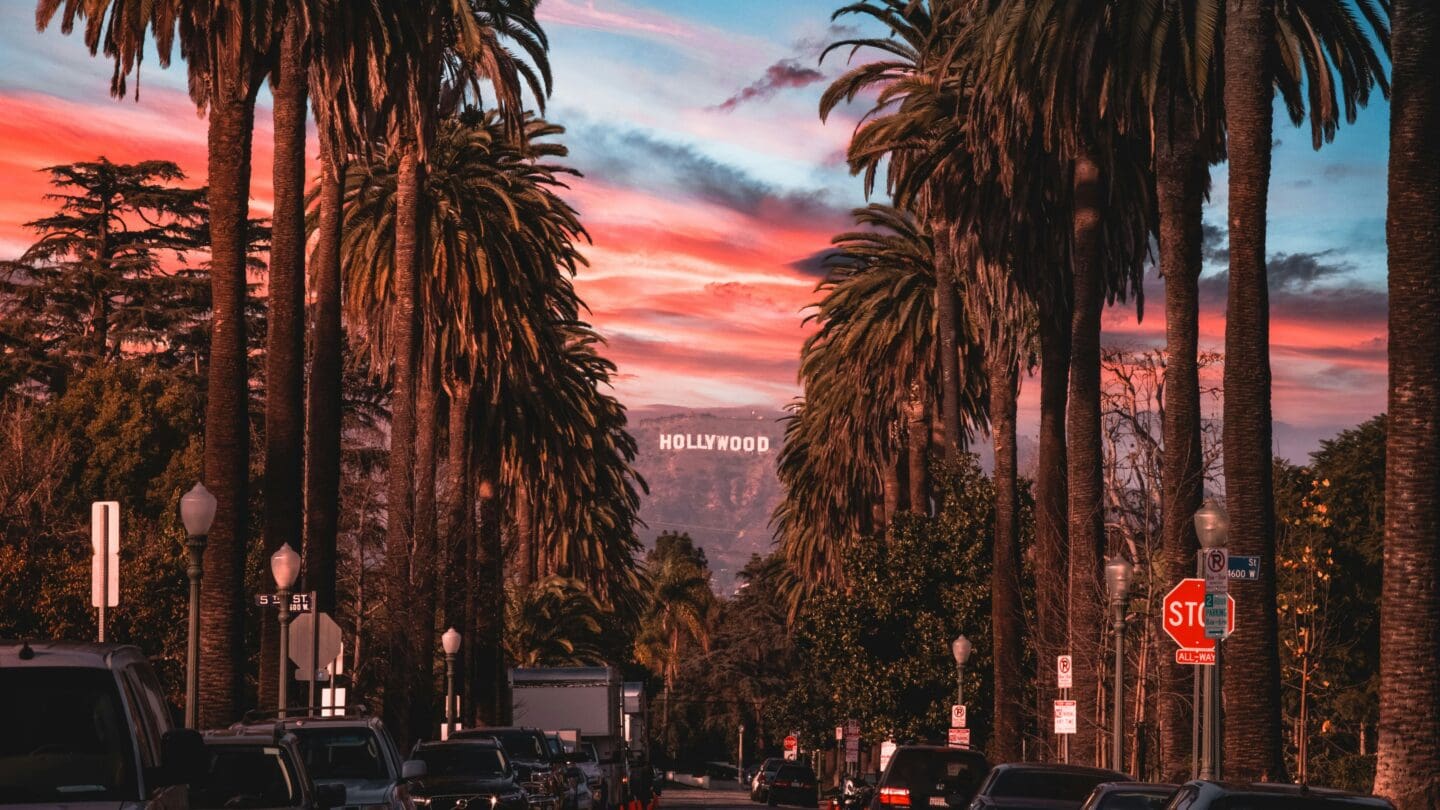
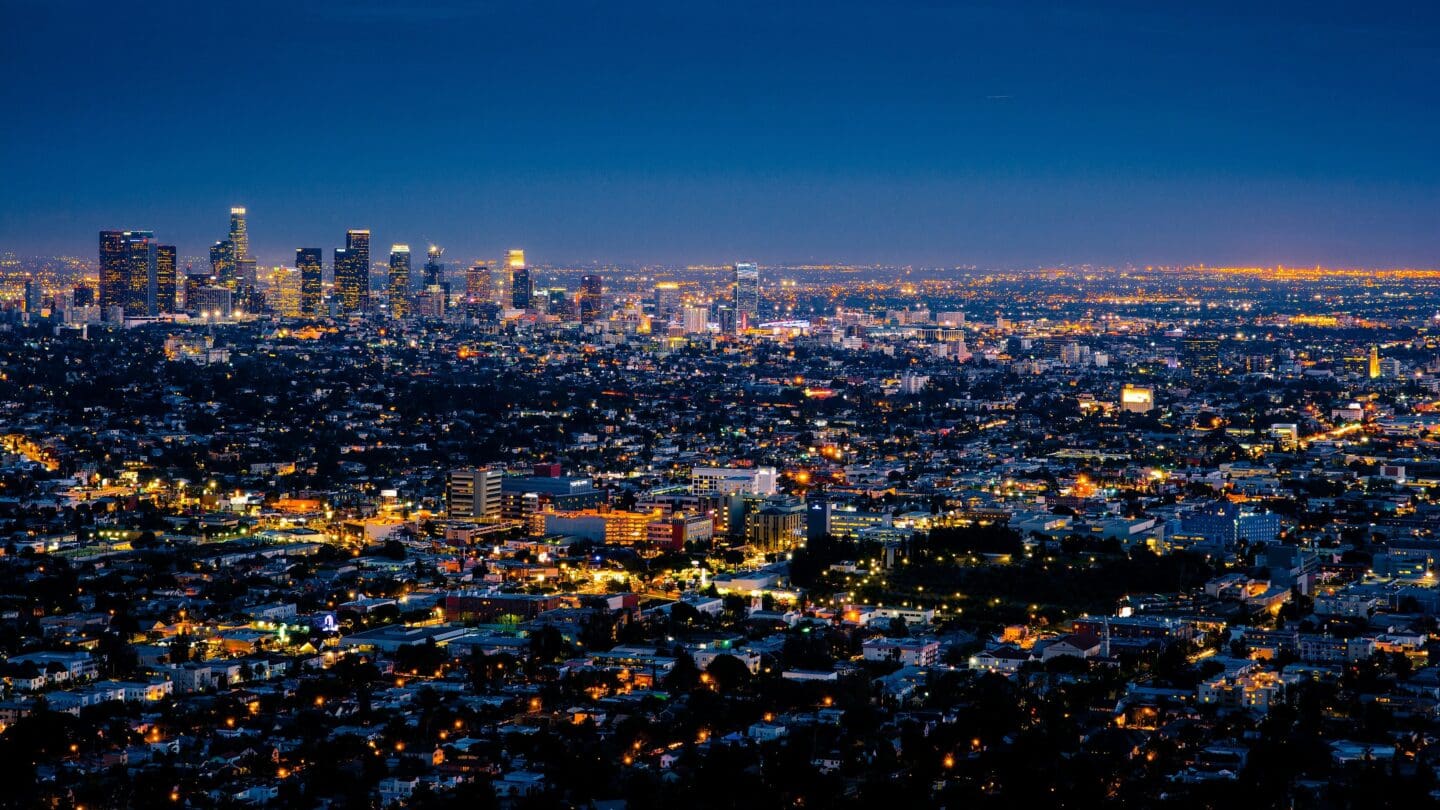
The city sought additional funding to speed up construction. In April, Metro was awarded $900 million in federal funding with assistance from the Bipartisan Infrastructure Law—over $700 million of which will go to the East San Fernando Valley Light Rail Transit Project and the D (Purple) Line Subway Extension Project. This federal funding included a Reconnecting Communities grant providing $139 million for improving community connectivity across highway barriers and access to high-quality transit. The added funds will help see a portion of the projects to completion in time but are still not enough to bear the brunt of what LA Games Chairman Casey Wasserman predicts will be the largest peacetime gathering of people ever.
As LA faces plan changes for 2028, they have an eye on Paris’s last-minute scrambles to prepare for the Games a month out. In fact, Mayor of LA Karen Bass visited Paris in March to study their Olympic planning close-up, get a glimpse into what lies in store for LA, and learn how to bring Parisian successes across the pond.
The trip embodied the collaborative planning and business development that the IOC had in mind with the New Norm; the two mayors have even signed an agreement to share their knowledge and best practices. Yet it also illuminated the urgency of finding transportation workarounds for LA. Stuck in the same position of delayed rail projects but lacking the same rail backbone as its European counterpart, the SoCal city must find an interim solution to manage the Games.
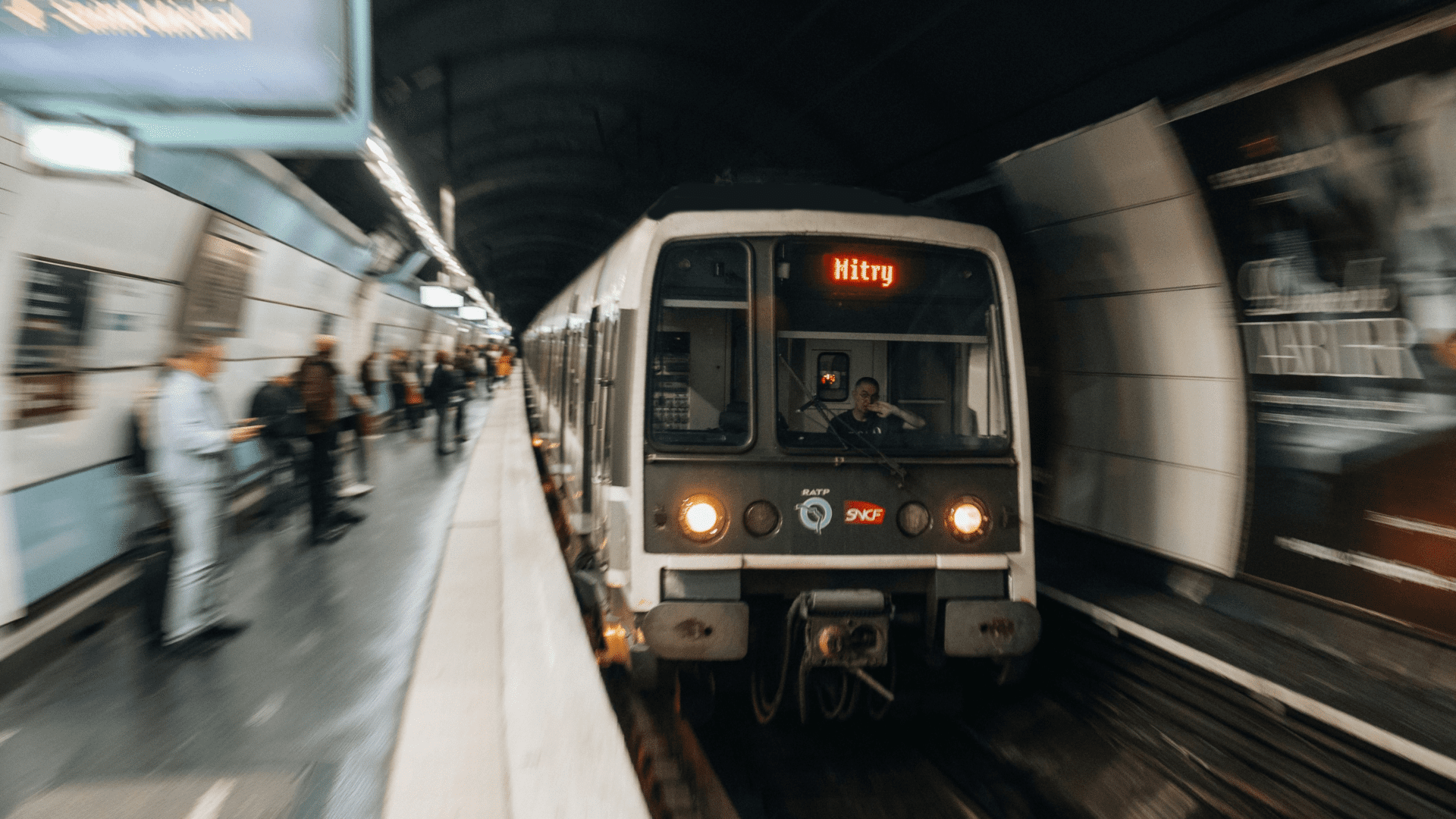
Mayor of LA Karen Bass visited Paris in March to study their Olympic planning close-up.
Thus, LA has pivoted in the past few months to find an additional $1 billion to fund a supplemental bus system, returning to their tried-and-true 1984 strategy. Bussing, combined with government encouragement for flexible work schedules to offset rush hours, was also successful more recently with Atlanta in 1996 and Salt Lake City in 2002. LA would need to potentially double its current bus fleet—adding 2,700 buses—to transport all the spectators, along with improving first/last mile connectivity to the rail system and at key stations/hubs, and is hoping to receive additional support from the federal/state government to do so.
Borrowed buses, however, do not have the same lasting impact on the transit network. After the previous bus-powered Olympic Games, host cities returned or got rid of the thousands of buses they had borrowed from various transit agencies across the country. But true to the modern vision, if able to find the funds, LA hopes to turn this unexpected adaptation into another opportunity to bolster the region’s transit and encourage long-term behavioral change.
“Maybe if we see a successful transit system, public sentiment and political will shift enough that we’ll keep the buses,” Director of the USC Transportation Engineering Program James Moore posited in an April LA Times article.
Successfully integrating such a massive bus influx into an already overcrowded road system could boost the public’s trust in Metro. It could also push forward improvement of transit infrastructure like mobility hubs, shaded or sheltered bus stops, or bolster fast and reliable service via bus rapid transit or transit-only lanes, helping keep up the recently improving ridership trends. But in order to see massive change, officials will need to address the core concern of safety on transit, shown by spiking crime rates on LA transit like the 54% increase from 2020-2023.
"Maybe if we see a successful transit system, public sentiment and political will shift enough that we'll keep the buses."
- James Moore, Director of the USC Transportation Engineering Program
As Eli Lipmen, the executive director of transit advocacy group Move LA, puts it, “It’s not like these projects aren’t going to get done; they are going to get done—just not on accelerated timeline.” And when they are operational, public support will have to be widespread enough to make the gamble worth it. LA will host the World Cup in 2026 and the Super Bowl in 2027, which could serve as test cases to gauge public transit ridership during sports mega-events.
LA needs to complement its engineering efforts with public engagement initiatives to shift the city’s culture away from its historic car-dominance. Promoting transportation education campaigns, involving community stakeholders, providing discount incentives for frequent users, and improving safety and security on public transit can all help build a new culture that priorities the connection and community inherent in a well-functioning public transportation network.
What LA’s Olympics will look like in four years is still to be determined as the city balances their goals for the rails with the necessity of buses. Their plans may even continue to change after they observe how Paris’s preparations shake out in action. The world is adapting to the learning curve of a new Olympic mindset that puts lasting urban reform at the forefront, and changing a long record of burdensome hosting is not a short journey.
If you plan on attending either of the upcoming Olympics, we encourage you to utilize whatever public transportation is available and do your part in making the dream of an environmentally friendly and car-free Games a reality. Beyond 2024 and 2028, make use of the Grand Paris Express or LA’s new infrastructure improvements, as a resident or visitor. These cities have shown us that the future is safe, convenient, and high-quality transit and it’s time we all step on board.
Header image: Olympic rings in the Place du Trocadéro in Paris. Photo: Anne Jea, Wikimedia.
